The trip to Atalier Nonelectric started as many visits both in Japan and at home begin: with greeting the dog. As everyone bent over the little corgi, Mook, Fujihara, the founder of Atalier Nonelectric entered the room. During the introductions, he revealed that he has a doctorate in physics and became an inventor in his thirties. He asked us to guess how many inventions he has created, and the answer was quite amazing. Not one hundred, as I guessed, or three hundred, as another student offered. Fujihara has created fifteen hundred different inventions.
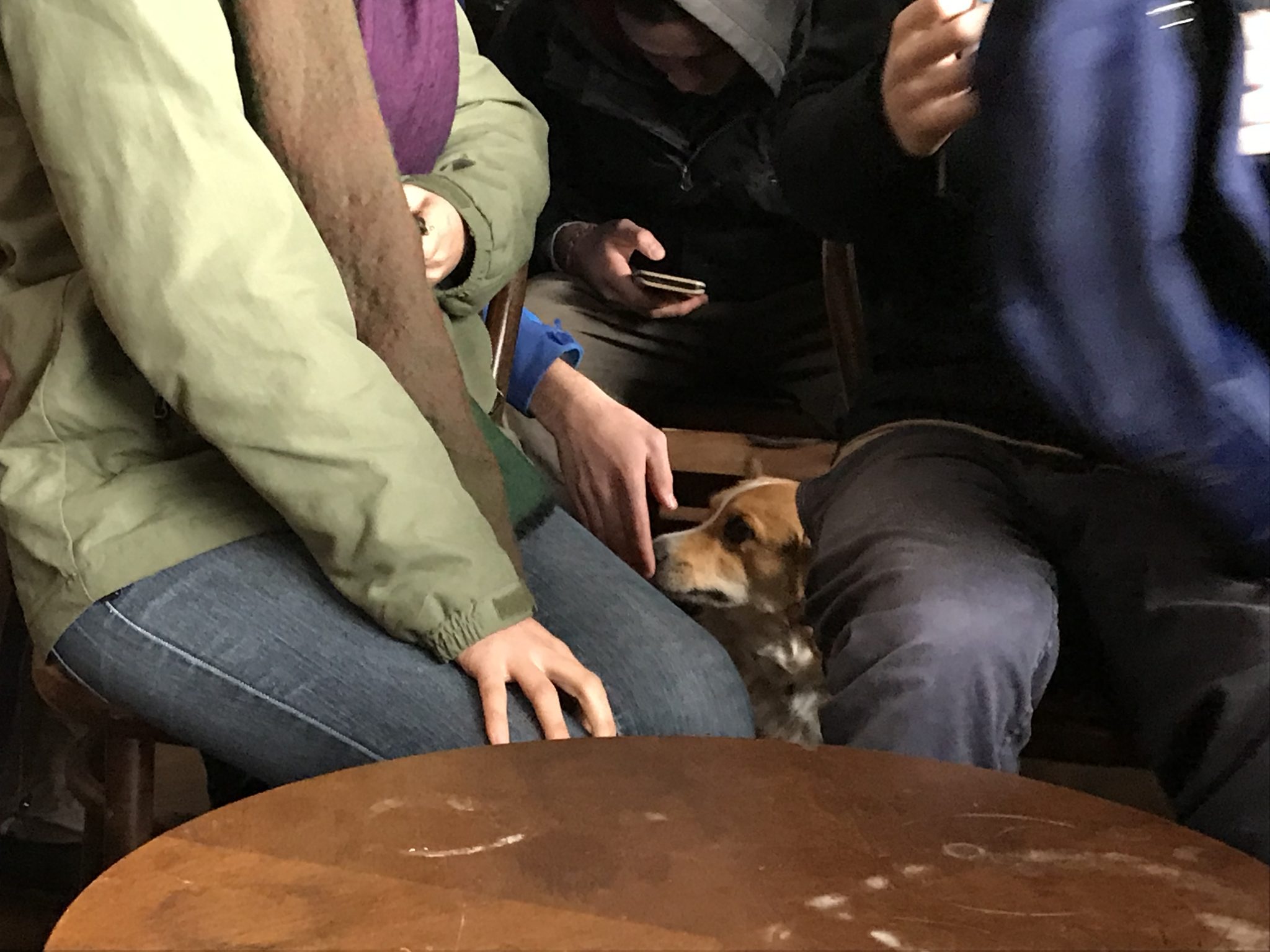
Fujihara and Yukari’s dog, Mook, plus admirers.
After introductions, we proceeded to the bulk of the visit: a tour of the campus. Fujihara divided us into two groups, the first led by himself, the second—my group—led by his wife, Yukari. She led us first outside to present a nonelectric refrigerator. Originally, Fujihara designed the fridge to combat meat rot in the desert where electricity is not necessarily readily available. It operates by using the natural patterns of heat radiation to release heat from the fridge as water in an interior layer evaporates, and it works especially well in locations where dry, clear nights—common in the desert—facilitate evaporation.
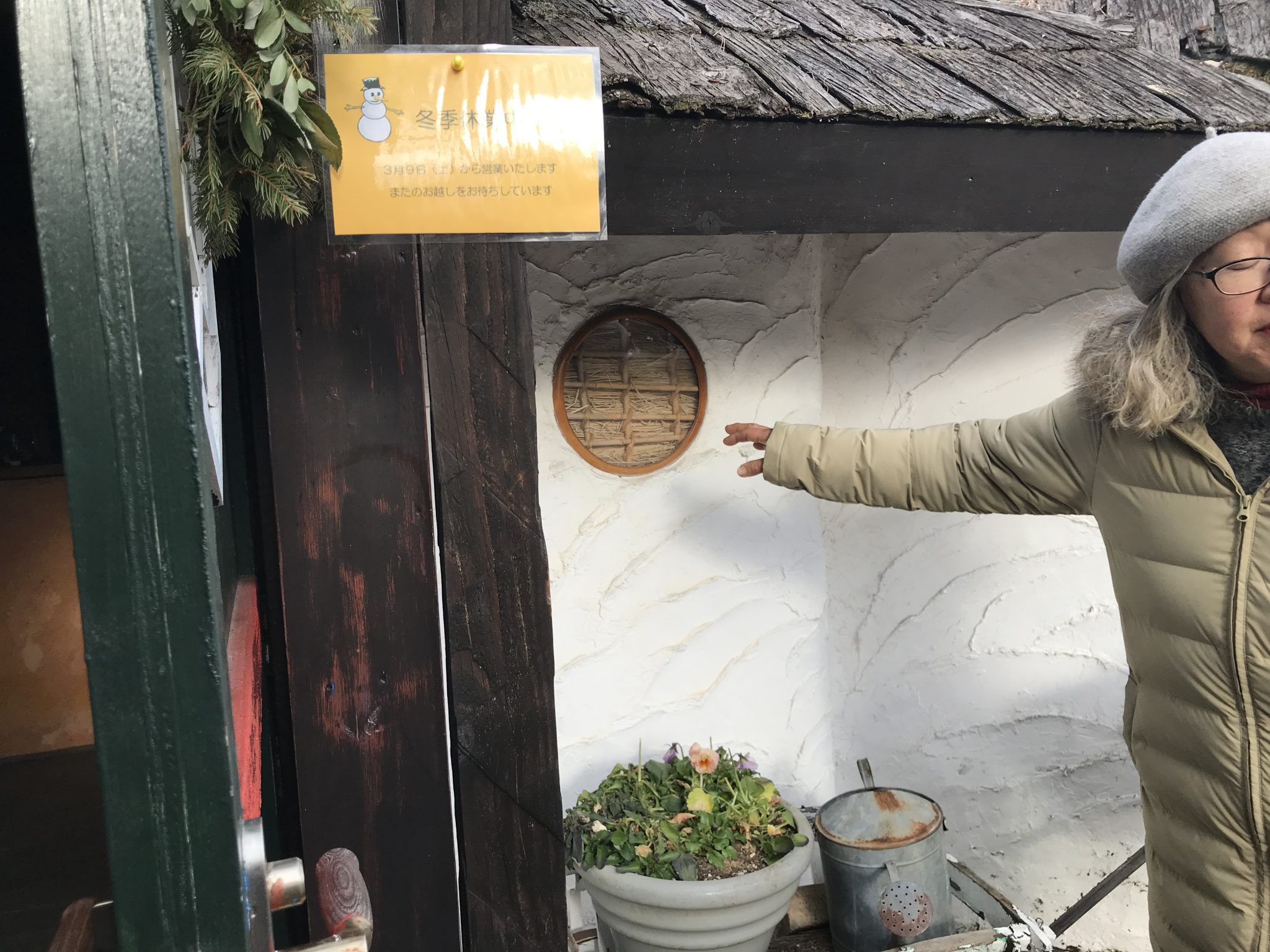
Exterior of the Cafe
We next visited the cafe that Yukari and Fujihara built along with some apprentices. It’s designed after houses in Sierra Leone, with some points to highlight being the circular shapes of the two main rooms, the ventilation in the conical ceiling and north wall allowing for a cooling effect in summer, and the straw and plaster walls which both allow the creators to shape nooks and shelves directly into the building and insulate the cafe against hot and cold weathers.
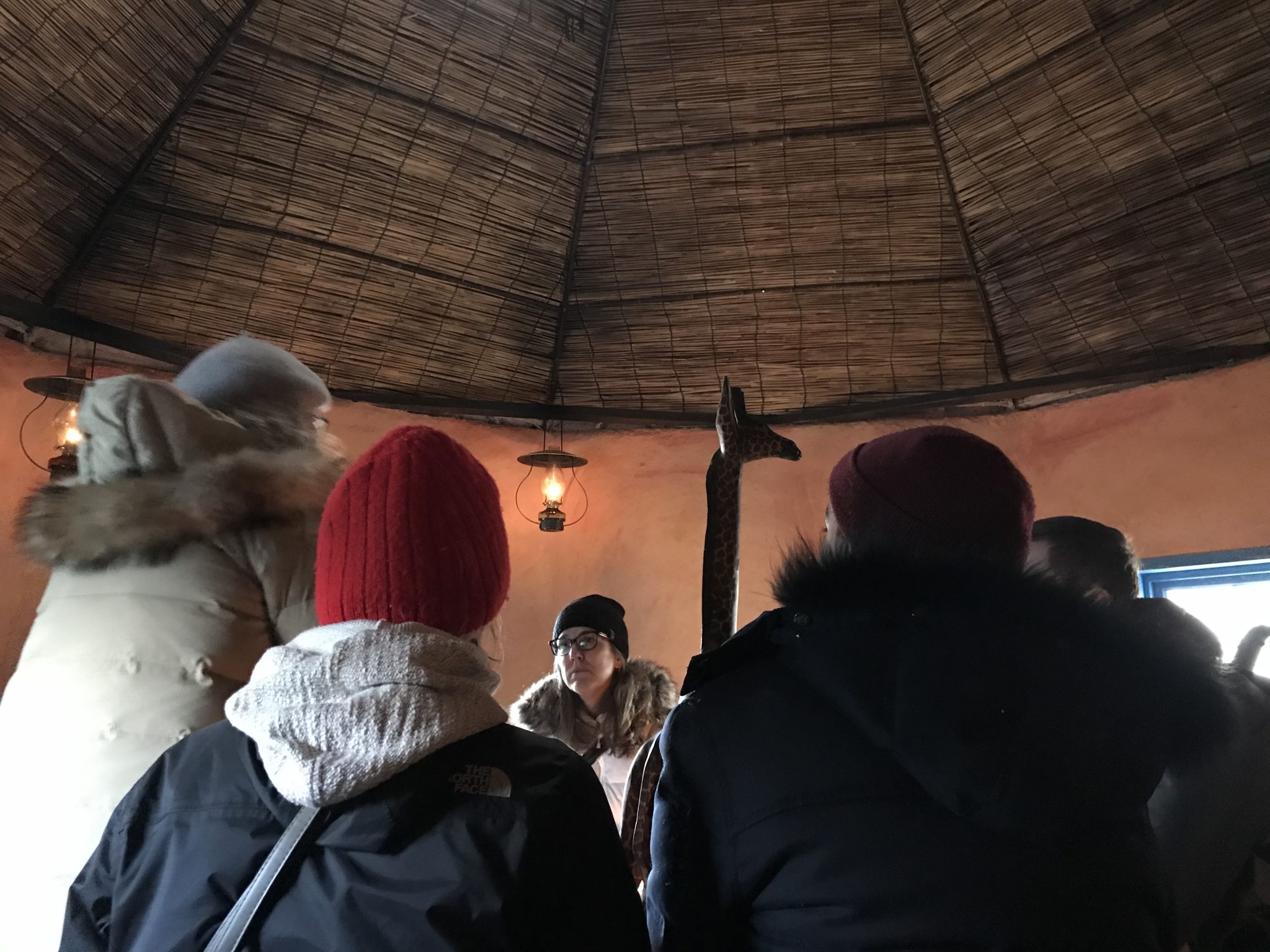
Interior of the cafe
On our way out of the cafe, we stopped at a solar fruit dehydrator, the chicken coop, and several small buildings built by Fujihara or his apprentices.
Lastly, we toured the workshop where all the magic happens. The workshop housed several power tools powered by a vegetable oil generator. (The nonelectric nature of the campus referred to their independence from outside sources of power.)
The big take away from this outing, as Yukari sought to impress on us, was that we could do it too. She encouraged us all to build a straw-bale house if we wished, get a pet goat, or find some other way to take our lives into our own hands rather that wait around for someone to tell us what to do.
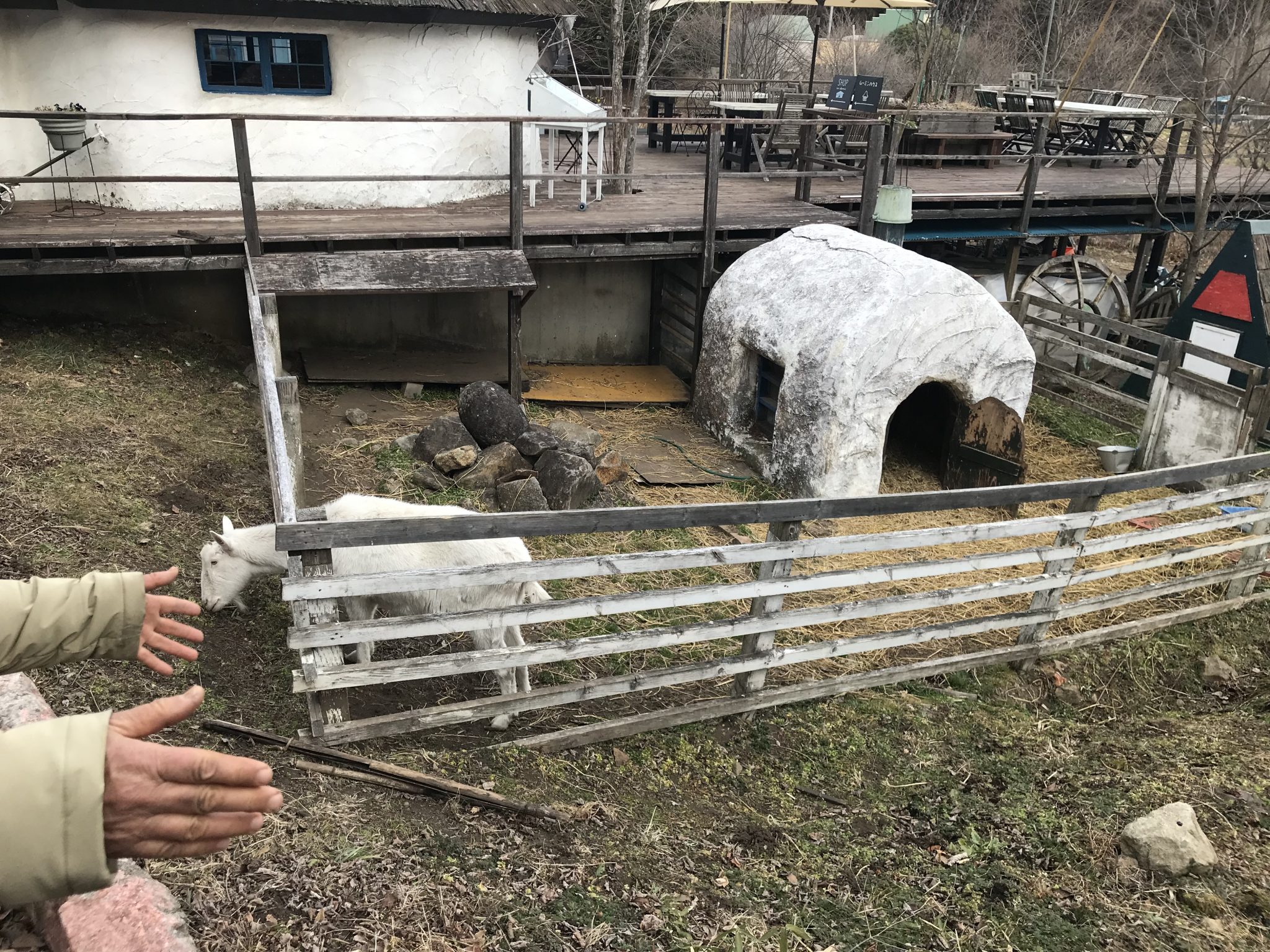
Peter the goat
The Atalier campus reminded me of the theme of transnationality present in our class readings from Avenell, who describes the transnational nature of the anti-pollution campaigns of the 1900s, during which several Japanese groups sought to bring the world’s attention to the plight of Minamata and Itai Itai sufferers to help force the Japanese government to properly regulate the companies in their borders and to help prevent and treat the same pollution diseases elsewhere. He also describes how the anti-nuclear waste campaigns fought the dumping of nuclear waste in the Pacific Ocean by the joining of many communities and many countries against the Japanese government’s decision. In the case of Atalier nonelectric, the plight Fujihara and Yukari fight through connecting many localities in a transnational web stretching from Sierra Leone to Sweden to Japan and other places—beyond the obvious needs of those who gain from the nonelectric fridge or the mechanical loom—is that of the Japanese youth. Like many of those in this class, as Yukari asked and we answered, many of them feel a great uncertainty in this era of global warming and technological dependence, and are eager to learn what they can do for themselves and for others with their own two hands. An apprenticeship with Fujihara offers an opening into the nonelectric, DIY life.
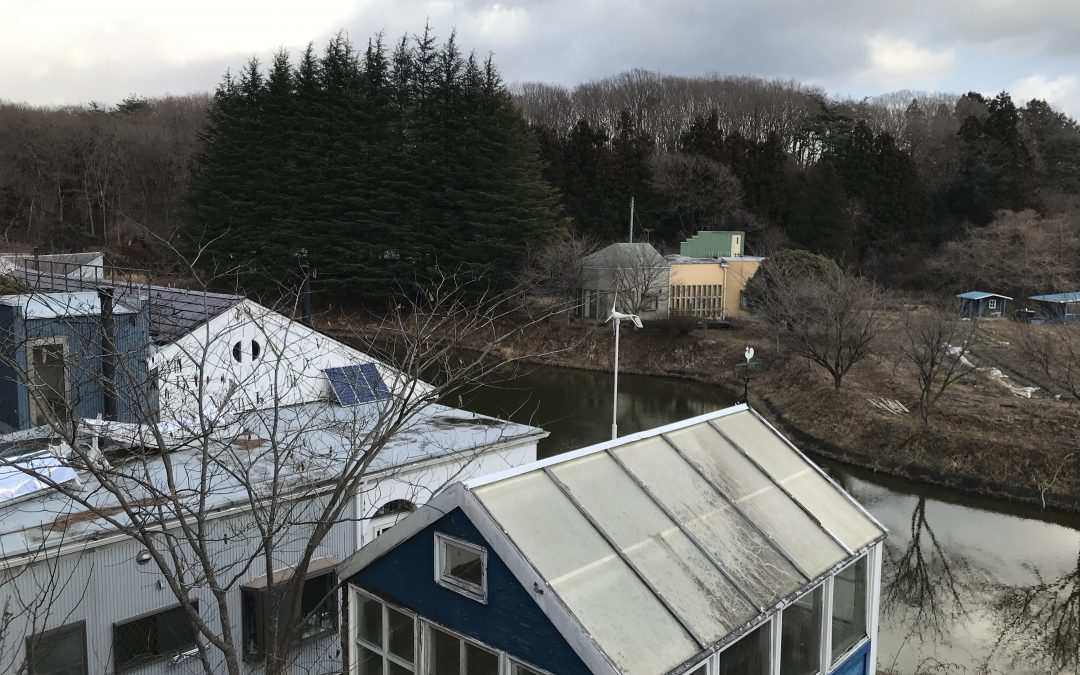
Recent Comments